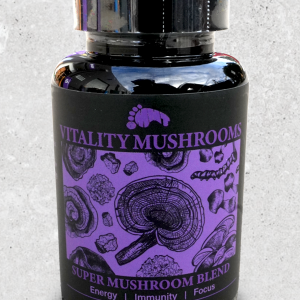Levator Scapulae – Neck Pain | Shoulder Pain | Headaches
‘The Devil of Neck Pain’
co written by – Aaron Kiegaldie & Jason Cowland
In Brief: How We Fix
- Deep Myofascial Release to the Cervical Spine to release Neck Pain | Medial Scapula Border | Anterior Shoulder Complex
- Neuromuscular Activation of the Scapula Stabilisers | Postural Correction
- Neuromuscular Facilitated Power Training – Increasing strength in Cervical Spine | Thoracic Spine | Rotator Cuff | Glenohumeral Joint
If you spend the majority of your day sitting at your desk, driving a car, or on the phone chances are you will suffer some form of Neck Pain throughout your lifetime.
Neck pain can vary; from mild stiffness upon wakening, to excruciating pain stemming from some form of structural issue within the cervical spine.
One muscle that plays a major role in most forms of Neck Pain is the Levator Scapulae (Lev Scap). For a fairly small muscle, Lev Scap packs quite a punch and can cause significant amounts of pain and headache like symptoms when aggravated.
What Is The Levator Scapulae?
The Levator Scapulae is located along the lateral and posterior sides of the neck. It attaches to the transverse process of the cervical spine (C1-C4) and the superior portion of the Medial (inside) scapula. The role of the Levator Scapulae is to laterally flex the neck (side bend), rotate the head and neck to the same side, elevate the scapula and bilaterally it extends the head and neck.
How Does Levator Scapulae Cause Neck Pain?
Lev Scap tension is affects a majority of the population. The muscle is quite commonly over-active and shortened (tight) due to excessive sitting, over-use of mobile phone and increased stress levels. Too much time spent in these positions leads to elevated/protracted shoulders (classic slouch position) – Lev Scap is shortened in this position – thus rendering it to become tight and overactive. When Lev Scap is in this state – it can lead to postural asymmetries, the development of painful trigger points and can ultimately cause pain during movement of the head and shoulders.
Upper Cross Syndrome:
 The most common postural dysfunction that presents within this area of the body is Upper Cross Syndrome. Upper Cross Syndrome presents with a forward head carriage, chin poke, rounded shoulders and increased Thoracic Kyphosis. In this posture the Levator Scapulae, Upper Trapezius, Sub Occipitals and the Pectoralis Major/Minor tend to be tight and overactive, which weakens the the Scapula Stabilisers and the Deep Neck Flexors.
The most common postural dysfunction that presents within this area of the body is Upper Cross Syndrome. Upper Cross Syndrome presents with a forward head carriage, chin poke, rounded shoulders and increased Thoracic Kyphosis. In this posture the Levator Scapulae, Upper Trapezius, Sub Occipitals and the Pectoralis Major/Minor tend to be tight and overactive, which weakens the the Scapula Stabilisers and the Deep Neck Flexors.
 One of the most common complaints that a client would present with, is the feeling of ‘pulling’ and pain from the base of the skull down the inside of the scapula. Simple movements such as ‘head-checking’ whilst driving and answering the phone can be quite difficult. This is due to Lev Scap’s connection with the Posterior Arm Line (Tom Miers). This connection as seen on the left – can cause pain to present in places that are further away from the actual anatomy of Lev Scap itself.
One of the most common complaints that a client would present with, is the feeling of ‘pulling’ and pain from the base of the skull down the inside of the scapula. Simple movements such as ‘head-checking’ whilst driving and answering the phone can be quite difficult. This is due to Lev Scap’s connection with the Posterior Arm Line (Tom Miers). This connection as seen on the left – can cause pain to present in places that are further away from the actual anatomy of Lev Scap itself.
The best way to correct Upper Cross Syndrome, in particular tension and pain produced by the Levator Scapulae is, sustained Deep Myofascial release to the Levator Scapulae and the Anterior Shoulder to allow the scapula to retract and regain activation in the Scapula Stabilisers. To fully cement change within the Neck, Shoulder and Thoracic Spine – Neuromuscular Activation and Power Training is needed to strengthen the Scapula stabilisers (Rhomboids and Serratus Anterior) and Deep Neck Flexor Muscles.
How We Fix: Levator Scapulae Neck Pain
Deep Tissue Massage
Slow, deep and sustained pressure to the Scapula and Cervical Spine attachment points of the Levator Scapulae, this may bring about referral pain up the neck into the base of the skull, over the top of the head, and into the anterior (front) shoulder. You should notice immediate relief from pain and an increase in movement and range of motion.
Neuromuscular Activation| Power Training
Restoration of activation and strength in the scapula stabilisers is paramount in order to correct any postural issues or muscles imbalances that have developed through the shoulder complex, cervical and thoracic spine.
In order to cement change within the scapula stabilisers – neuromuscular patterning must be re developed firstly through static strengthening, holding neutral posture and isometric training. Once neutral posture can be held in static position, rehabilitation programs will the be progressed into strengthening the scapula stabilisers whilst targeting the anterior and posterior slings.
If you are suffering from ongoing bouts of neck pain and are sick of the standard approach to treating these issues – come in and see us! We guarantee to eliminate your neck pain for good!






